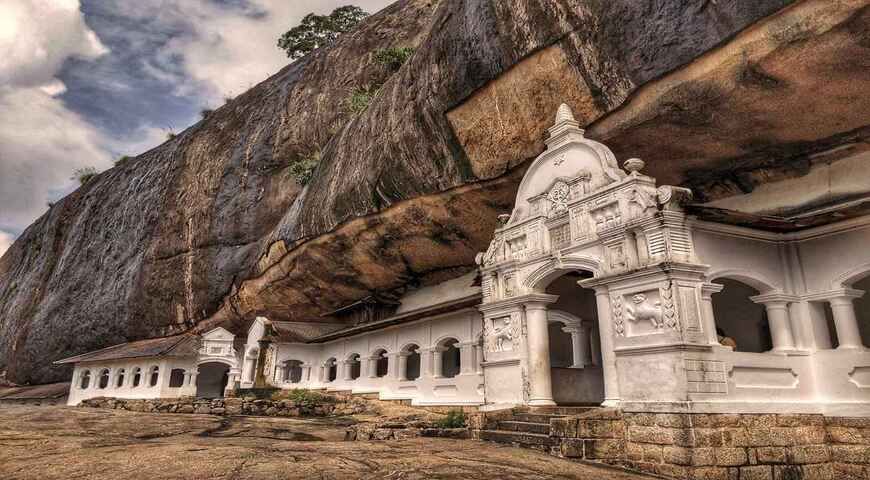
The Dambulla Cave Temple, also known as the Golden Temple of Dambulla, is one of Sri Lanka’s most impressive and well-preserved historical and religious sites. Located in the central part of the country, it is a UNESCO World Heritage Site and an important pilgrimage destination for Buddhists. The temple dates back to the 1st century BCE when it was established by King Valagamba. During his reign, the king took refuge in the caves to escape from South Indian invaders. Once he regained his throne, he transformed the caves into a magnificent temple complex as a token of gratitude.
The temple complex consists of five main caves, each filled with statues, murals, and other artistic representations of Buddha and various deities. There are more than 150 statues of Buddha within the caves, including a colossal 14-meter-long reclining Buddha. The walls and ceilings of the caves are adorned with intricate frescoes that depict scenes from the life of the Buddha and important events in the history of Buddhism. These paintings cover an area of about 2,100 square meters, making it one of the largest and most significant collections of ancient Sri Lankan artwork.
The Dambulla Cave Temple is situated atop a massive rock that rises 160 meters above the surrounding plains, offering stunning panoramic views of the surrounding countryside. The ascent to the temple involves climbing a series of steps, but the effort is rewarded with the serene and spiritual ambiance of the caves and the breathtaking vistas from the top. The temple continues to be an active religious site, attracting both pilgrims and tourists. It plays a vital role in the cultural and spiritual life of the local community. The annual Esala Perahera festival, celebrated with vibrant processions and traditional performances, further underscores the temple’s significance in Sri Lanka’s religious landscape.
Visiting the Dambulla Cave Temple offers a unique opportunity to explore Sri Lanka’s rich Buddhist heritage, admire ancient art, and experience the peaceful and contemplative atmosphere of this sacred site. The combination of historical depth, artistic beauty, and natural splendor makes it a must-visit destination for anyone traveling to the region.
